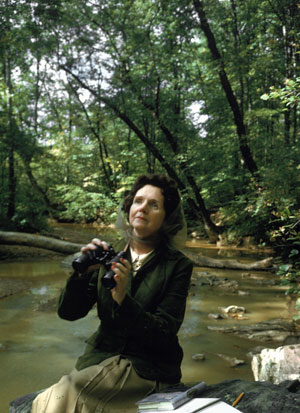Rachel Carson: The Pioneer of Environmental Awareness
Rachel Louise Carson (1907-1964) was a marine biologist, author, and conservationist whose work played a pivotal role in the modern environmental movement. Born on May 27, 1907, in Springdale, Pennsylvania, Carson developed a deep love for nature during her childhood, inspired by the rural landscapes around her. This early connection to the natural world would shape her career and influence her groundbreaking contributions to environmental science.
Carson pursued her academic interests in biology, earning a degree from Pennsylvania College for Women (now Chatham University) in 1929. She then continued her studies at Johns Hopkins University, where she obtained a master’s degree in zoology in 1932. Carson’s academic work focused on marine biology, and she initially embarked on a career with the U.S. Bureau of Fisheries (later the U.S. Fish and Wildlife Service), where she began as a writer and editor of educational materials.
Carson’s first major success came with the publication of Under the Sea-Wind (1941), a book that vividly described the lives of marine creatures. Her lyrical prose and ability to convey complex scientific concepts to a general audience garnered her significant acclaim. This was followed by her best-selling book The Sea Around Us (1951), which won the National Book Award and established Carson as a prominent figure in the world of science writing. This book, along with her subsequent work The Edge of the Sea (1955), further highlighted her expertise in marine biology and her talent for engaging storytelling.
However, it was Carson’s Silent Spring (1962) that had the most profound impact. In this seminal work, Carson meticulously documented the environmental harm caused by indiscriminate pesticide use, particularly focusing on DDT. Silent Spring exposed the dangers of these chemicals to wildlife, ecosystems, and human health, and it challenged the practices of the chemical industry and the policies of government regulators.
Carson faced significant opposition from the chemical industry, which sought to discredit her findings. Nevertheless, her thorough research and compelling narrative captured public attention and led to a shift in public perception regarding the use of pesticides. Her work ultimately contributed to the banning of DDT in the United States and sparked a nationwide environmental awareness that led to the creation of the Environmental Protection Agency (EPA) in 1970.
Curiously, Carson’s background in marine biology provided her with a unique perspective on ecological interconnectedness, which was evident in her writing. She articulated the complex interrelationships between organisms and their environments, emphasizing that human actions could disrupt these delicate balances with far-reaching consequences.
Carson’s influence extended beyond her publications. Her work inspired a new generation of environmental activists and scientists, laying the groundwork for the modern environmental movement. Her call for greater scientific responsibility and her advocacy for the protection of natural ecosystems resonate today as foundational principles in environmental conservation.
Despite her battle with breast cancer, which she privately fought while writing Silent Spring, Carson continued to advocate for environmental stewardship until her death on April 14, 1964. Her legacy endures through the ongoing efforts to protect the natural world and promote sustainable practices. Rachel Carson’s vision and courage have left an indelible mark on environmental science and public consciousness.
#RachelCarson #SilentSpring #EnvironmentalScience #MarineBiology #Conservation #EnvironmentalAwareness #Sustainability #NatureWriting #PublicHealth #Ecology
